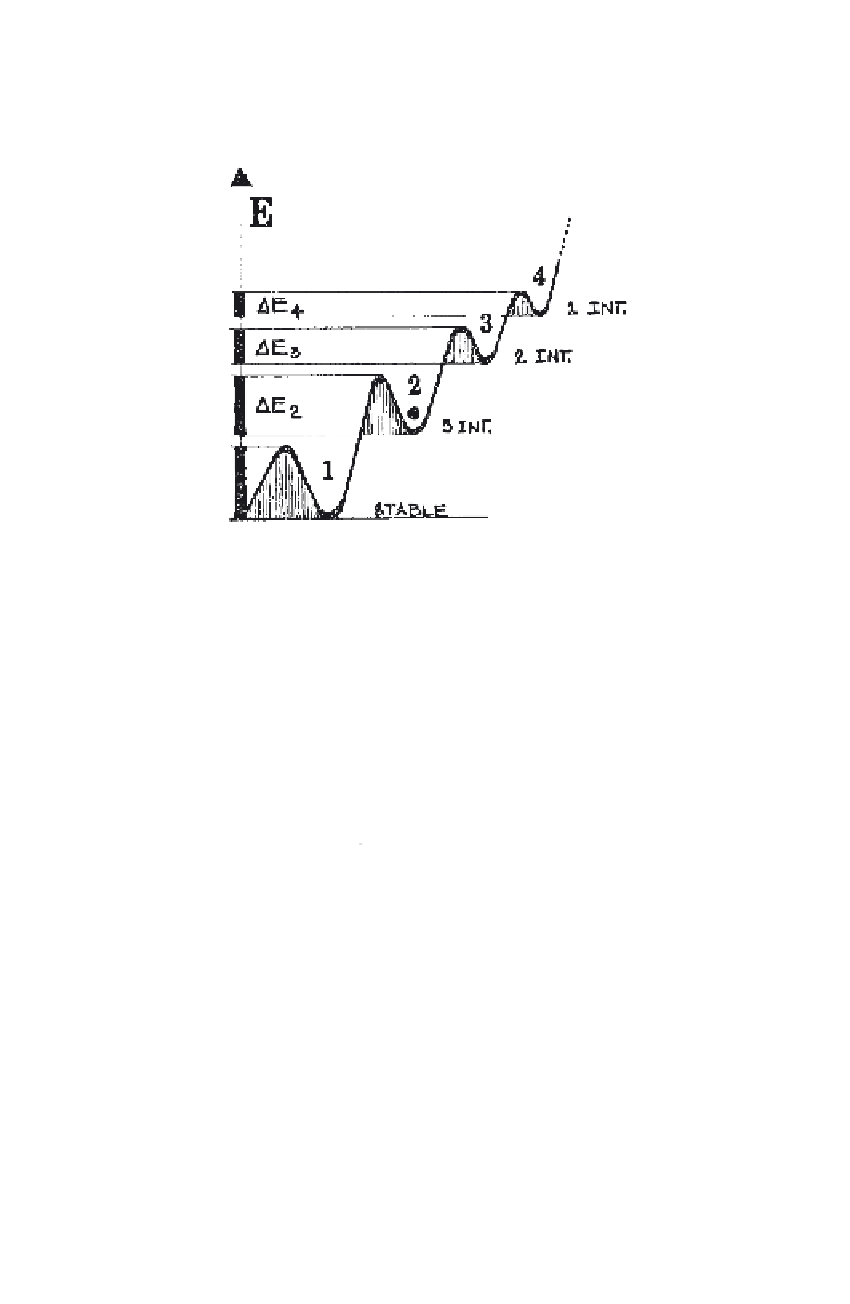Information Technology Reference
In-Depth Information
FIGURE 9. Four of the lowest energy levels corresponding to some molecular con-
figurations together with the threshold energies that keep these configurations
stable within some definite intervals of time.
We, however, need to account of an “input proper” X, in order to be
able to interact with this system, i.e., to allow for a “read-in” and “read-out”
operation:
(
)
.
Y
=
F X, Y
¢
Figure 9 sketches the four lowest energy states numbered 1,2,3,4 of a
molecule together with the three energy thresholds, DE
2
, DE
3
and DE
4
which keep the corresponding configurations stable at least during the
“life-span” of these states. For simplicity, I assume these life-spans to be
multiples of the shortest life span t*, i.e., under normal temperature con-
ditions DE
4
will give state #4 a lifespan of t*, and the others as suggested
by Table 1.
Assume now that at a particular instant, t
0
, this molecule is in state 2
(black dot suggests this position), and within three intervals no energy is
supplied to kick it into a higher state. As a consequence, it will flip back
into state 1, giving off the stored energy difference between state 2 and 1.

Search WWH ::

Custom Search